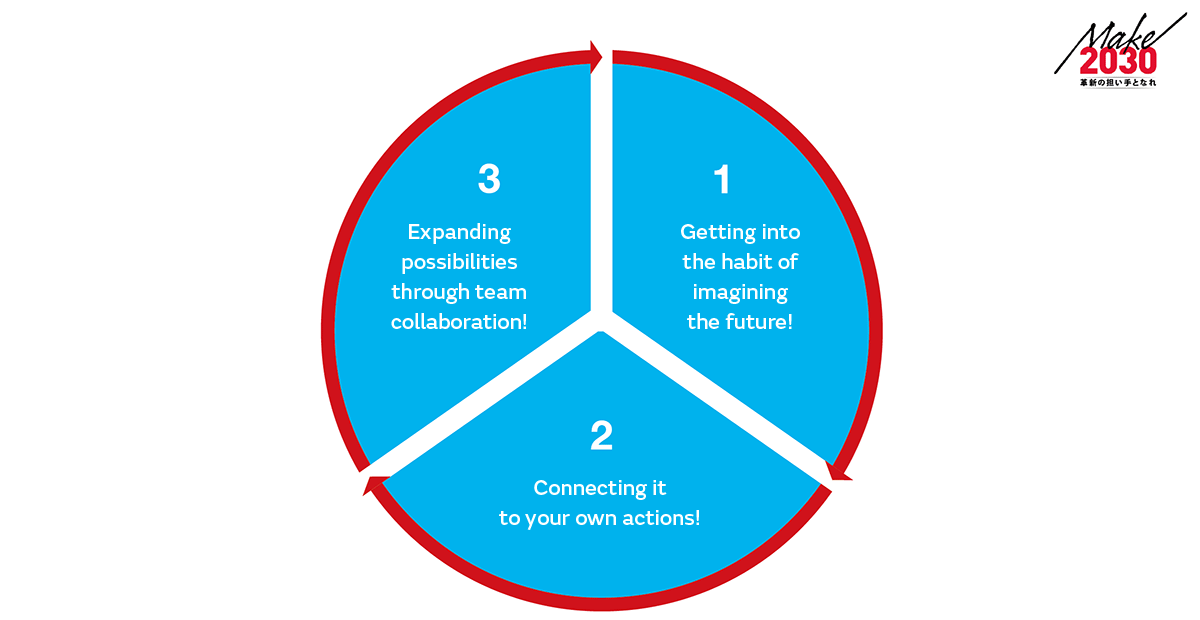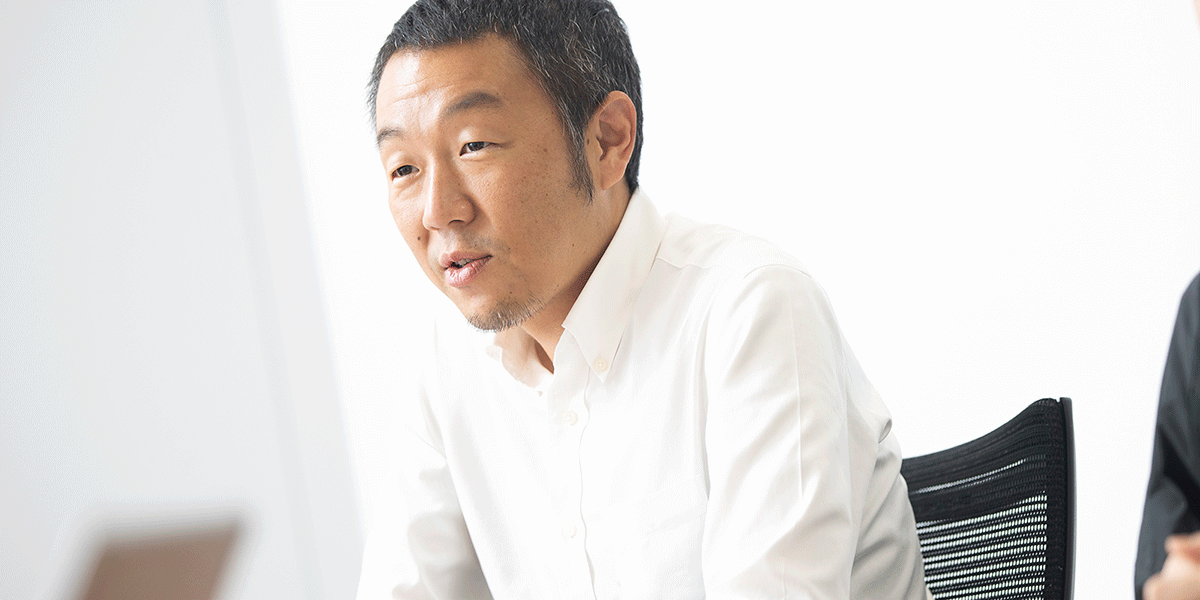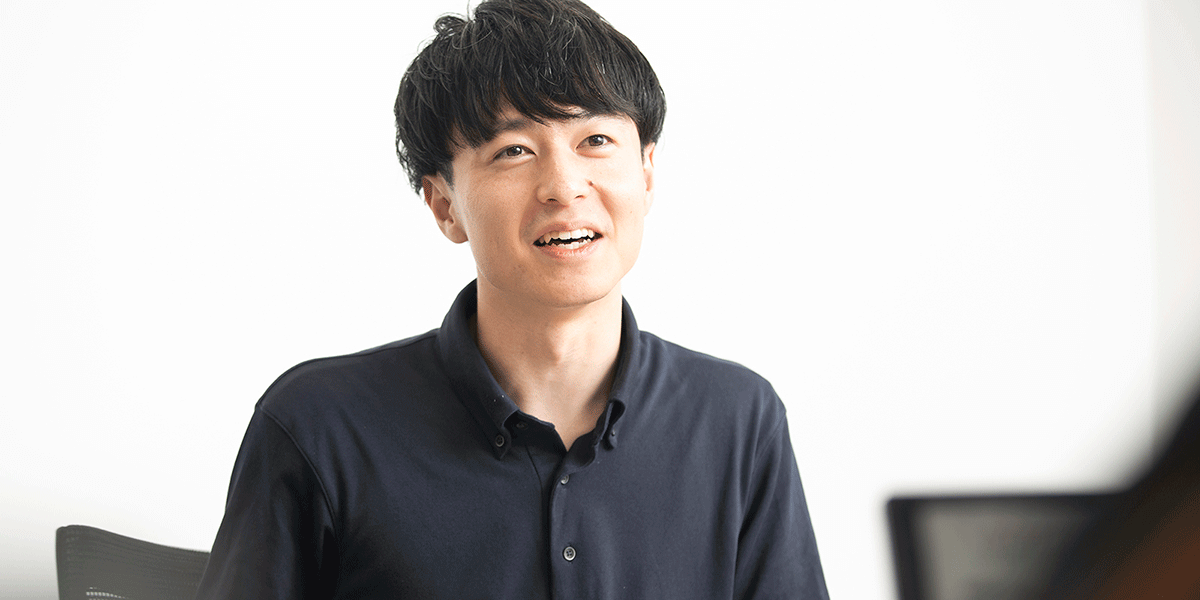Human resource development × muRata
What Is the "Make2030" Human Resource Development Program to Cultivate Innovation Leaders? (Part 1)
INDEX
1. Cultivating the mid-level employees who will become the leaders that realize "Vision2030"
2. Fostering the ability to view the organization and operations with a cross-sectional perspective
3. Broadening horizons and perspectives through dialogue to create the company's future
At Murata, we implemented a new human resource development program to cultivate future management leaders called "Make2030 - Be An Innovation Leader," which ran for a year and a half from May 2022.
What kinds of reform and career development is Murata supporting through this program, which fosters creativity for the future by encouraging cross-organizational dialogue between participants and broadening horizons and perspectives? Moreover, what is the impact of the climate of human resource development that is established in Murata?
Nishida, Matsumura, Takami, and Mikuma from the Human Resource Development Department, who were involved in the operation of "Make2030," reflect on the project.
1. Cultivating the mid-level employees who will become the leaders that realize "Vision2030"
The "Make2030" project started in May 2022 as Murata's new human resource development program. The project started from an internal meeting in which the participants raised and discussed various issues that Murata was facing.
Takami: "We built 'Make2030' as a training program targeting mid-level employees after reconciling the issues faced by the Human Resource Development Department and the Management Strategy Department. The Human Resource Development Department faced the issue that the cultivation of the next generation of leaders among mid-level employees in their 30s and 40s was insufficient. We wanted to cultivate the abilities of mid-level employees, who were expected to be involved in future management, as next-generation leaders by establishing opportunities early on for them to face Murata's future and think about it as their own issue."

Matsumura: "At the time, I participated in discussions with the Human Resource Development Department as a member of the Management Strategy Department. To realize 'what Murata wants to be' based on the company's 'Vision2030' long-term plan, the Management Strategy Department felt the need to spread the Vision2030 message within the company and encourage each employee to empathize with the growth strategy and make it their own."

Takami: "As we brought together this mutual feeling that each department was facing issues and considered the program, we established the three steps of 'medium to long-term understanding improvement,' 'team activities,' and 'leadership image clarification' as a broad framework for the training."
Matsumura: "Moreover, because this training targets human resources that we hope will play a central role going forward in realizing the long-term plan set forth as 'Vision2030,' we selected 'Make2030' as the name of the training. It incorporates our expectation that they will actively participate as central players in creating Murata's future."

2. Fostering the ability to view the organization and operations with a cross-sectional perspective
Takami: "First, in terms of the points that we wanted the participants to be aware of throughout the entire program, we clarified the aims of 'getting into the habit of imagining the future!,' 'connecting it to your own actions!,' and 'expanding possibilities through team collaboration!' However, we want all employees to be aware of these points, not just the 'Make2030' participants."

Nishida: "Murata has the slogan 'Innovator in Electronics,' which expresses the desire to 'be an innovation leader in the electronics industry.' To continue being an 'Innovator in Electronics' going forward, we believe that it is important to cultivate human resources who possess these three characteristics. In particular, we believe that these characteristics are essential to the human resources that we would like to see drive innovation and established them as important points of 'Make2030' as well."

Approximately 130 participants were selected from among mid-level employees in their 30s to 40s. The selection of personnel from across the organization transcends the boundaries between business divisions and is a significant feature of "Make2030."
Nishida: "As the scale of the company grows larger and the organization becomes more complex, we felt that the next generation of leaders need the ability to view the organization and operations with a cross-sectional perspective. To date, various types of training have been conducted at Murata, but this is the first time we have attempted cross-sectional training on such a large scale."
Matsumura: "When the scale becomes this large, the number of interested parties also increases. In addition, because this training separates the steps into three parts spanning a year and a half, the impact during implementation is significant, and there were concerns that it would pose certain obstacles to normal business operations. However, a climate that values human resource development has been established in Murata for a long time. I believe that because of the support provided by this climate, which is typical of Murata, we were able to execute the 'Make2030' program."
Mikuma: "I have not worked at the company very long, but I strongly feel the climate cultivated by Murata of valuing human resource development. Within the operations that I have experienced so far, I felt that there are many supervisors who think seriously about how to develop their human resources. In addition, I frequently feel that dialogue is being properly carried out between supervisors and subordinates."

3. Broadening horizons and perspectives through dialogue to create the company's future
The importance of "dialogue," which is common to the three steps of the training program, is one feature of "Make2030."
Takami: "Dialogue is generated on a daily basis between employees who are closely involved in the same division and work. However, as the company scale grows and the number of employees increases, dialogue across businesses and locations becomes more difficult. Therefore, we hoped that if a place for cross-sectional dialogue was established through 'Make2030,' it would lead to opportunities to hear about the issues of each division, and they might become company-wide issues."
Thus, we incorporated workshops in which the participants talk with one another and team activities where they think up action plans, etc. into the program instead of just having them receive training in a passive way.
Takami: "As the changes in the business environment become more intense going forward, I think that human resources who can seriously think about the future of their own company, discuss, take action, and create the future are truly essential in the next generation of leaders. Therefore, in 'Make2030' we emphasized the discussion of one's own ideas and Murata's issues, broadening horizons and perspectives through trial and error, and taking action."
Matsumura: "The management team also participated here and there in 'Make2030,' and I think that having the participants directly see how the management team thinks about the company's future and how seriously they are thinking about it was very significant for the training."
*Departmental affiliations are as of June 2023.

